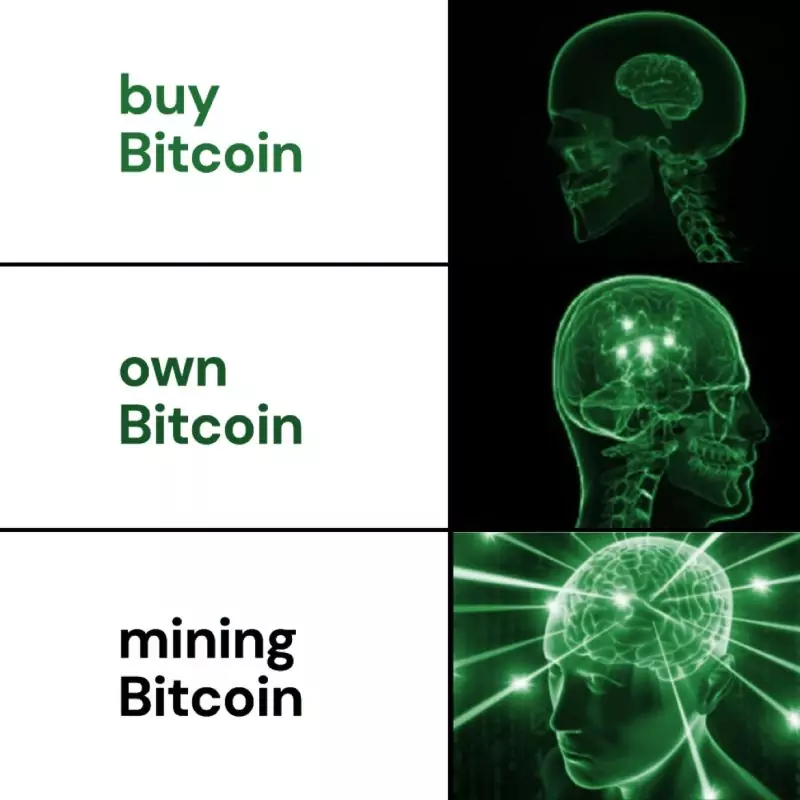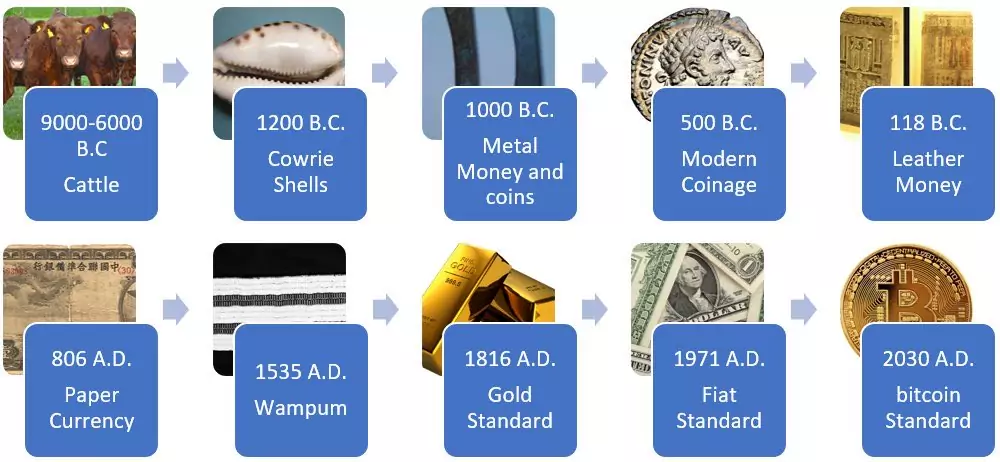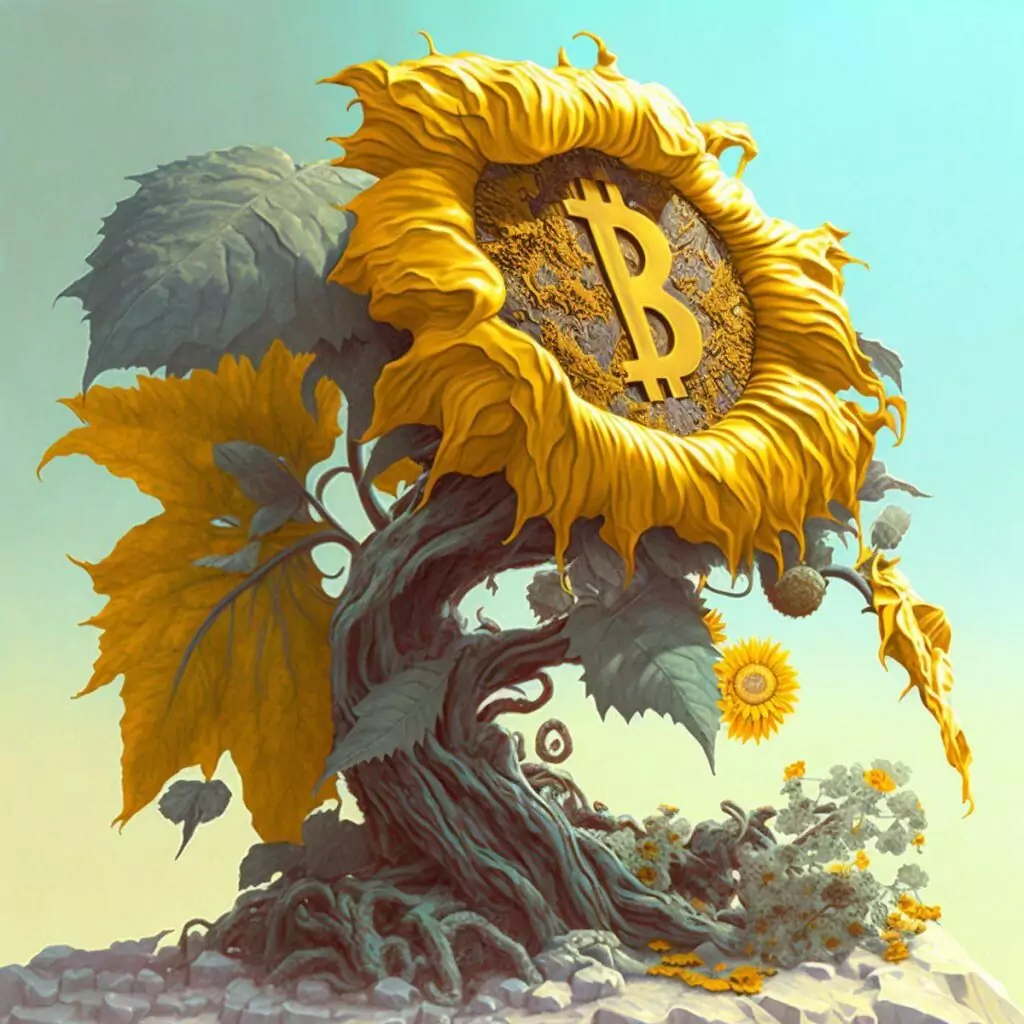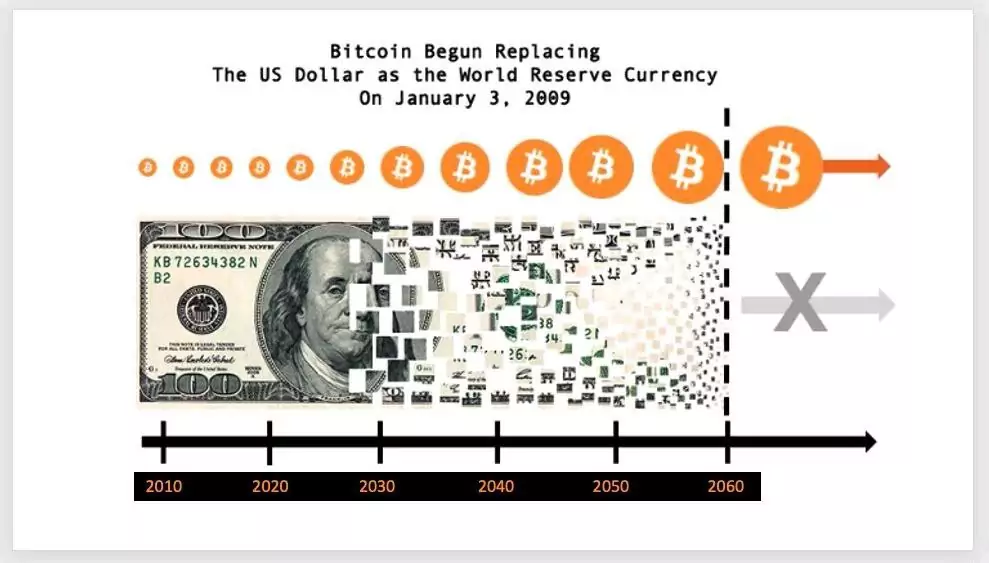Table of Contents
Since bursting onto the scene in 2009, Bitcoin is taking the world by storm. But what is Bitcoin? Understanding the world’s leading digital currency is crucial to getting ahead of the curve as decentralized money becomes more important than ever.
What Is Bitcoin?
Bitcoin is a decentralized, peer-to-peer payments settlement system with its own native digital currency, bitcoin.
Bitcoin with a capital “B” refers to the network, whilst bitcoin with a small “b” refers to the digital currency, also known as BTC.
It’s important to note that the Bitcoin network is not a payments aggregator like VISA, but a base layer settlement system like Fedwire.
Layer 2 protocols such as the Lightning Network operate more like VISA, handling large numbers of smaller transactions almost instantaneously and settling them at a later time.
The final settlement is performed on the base layer, the actual Bitcoin blockchain, solidifying the final balances of transactions.
Bitcoin uses blockchain technology, where multiple nodes keep an updated copy of a database, rather than a centralized institution keeping the only copy, like in the cases of Fedwire and VISA.
The ledger is public, so anyone can read it, and all transactions are traceable. Every bitcoin can be traced back to the first block it was mined it.
Mining refers to the process of adding blocks to the blockchain.
Miners add blocks to the blockchain by competing in a process called Proof of Work (PoW).

What Is The Bitcoin Network?
The Bitcoin network is made up of nodes, miners, and participants.
Nodes each store a full copy of the blockchain – a complete record of the transaction history on the network.
Nodes also store the network protocol, which governs the rules of the network.
Miners compete to add blocks to the blockchain by performing PoW, which uses computing power (or hashing power) to guess the hash of the next block.
Miners choose which transactions to compile in each block, but they must abide by the rules of the network or the nodes will not accept their proposed blocks.
Participants are ordinary users who transact in bitcoin, the network’s native currency.
When you transact in bitcoin, your transaction is sent to the mempool (memory pool) where it waits for a miner to add it to a block to be added to the blockchain.
The Bitcoin blockchain is known as a layer 1 protocol, the base layer, or the mainnet (main network).
Additional protocols, such as the Lightning Network, are known as layer 2 protocols or layer 2 solutions.
Layer 2 solutions are “off-chain”, they conduct their own transactions and settle the final results on the base layer.
What Are The Characteristics Of The Bitcoin Network?
Bitcoin is decentralized, meaning there is no single entity or third-party institution that owns or controls the network.
The network is governed by community consensus, which is enforced by the nodes.
Anyone can become a node, as long as they have a computer that can store the blockchain history and run the network protocol.
Bitcoin is permissionless, meaning anyone can use it. As long as you have an internet connection, you can transact in bitcoin or view the full transaction history.
Bitcoin transactions are pseudonymous, meaning all the transaction addresses are publically viewable but not necessarily tied to any individual’s identity.
Transactions are also immutable, meaning they cannot be changed. Once performed, a transaction cannot be reversed.
This is guaranteed by the PoW consensus mechanism, which prevents forking (splitting the blockchain) and double-spending (counterfeiting bitcoin).
The supply of bitcoin is capped at 21 million, making it the only provably scarce asset in the universe.
What Is Bitcoin Mining?
Bitcoin mining is the process of competing to add the next block to the blockchain.
Each block has a hash, a string of numbers and letters unique to that block.
Miners have to expend computational resources (in the form of electricity-powered hash power) to guess the hash of the next block.
This works by running a hash function through a computer, essentially guessing as many random hashes as possible as quickly as possible.
The miner that correctly guesses the next hash then broadcasts it to the rest of the network, which can then confirm that they got the correct answer and has won the right to propose the next block.
Miners compete to do this for two reasons: transaction fees (or miner fees) and the block reward.
Transaction/miner fees are tips offered by participants transacting on the network. Participants will offer higher fees to try and get their transactions prioritized.
The block reward is a set number of newly minted bitcoin that is granted to the miner as compensation for the electricity they had to buy to complete the PoW.
The original block reward was 50 bitcoin, but this halves every 210,000 blocks.
This halving is often considered to be every four years, but it is more accurately roughly every three years and nine months.
Currently, the block reward is 6.25 bitcoin.
Blocks are mined on average every 10 minutes, which is maintained by the difficulty adjustment that takes place every two weeks.
As more miners compete to mine the next block, more hash power is added to the network, which speeds up the mining process.
The difficulty adjustment, therefore, makes mining more difficult so as to maintain the average block speed of 10 minutes.

How Does Proof Of Work Benefit Bitcoin?
The Proof of Work consensus mechanism is crucial to the Bitcoin network and to bitcoin as an asset.
It benefits the network by ensuring its security.
In order to attack the network, a bad actor would need to be in control of at least 51% of the hash power.
This would theoretically enable them to reverse transactions, allowing them to double-spend their bitcoin.
The more hash power the network is currently producing, the more secure the network is against attacks.
Proof of Work also benefits bitcoin by imbuing it with intrinsic value.
Bitcoin is actually the only digital asset in existence with intrinsic value, and it’s entirely down to the PoW consensus mechanism.
Unlike other digital assets (largely including fiat currencies like dollars), bitcoin can’t be inflated free of cost.
Although bitcoin does have a capped supply, the supply is currently increasing by 6.25 BTC every block. However, this isn’t for free.
Whilst dollars can be “printed” by updating numbers on a spreadsheet, bitcoin can only be brought into circulation by expending real-world resources in the form of electricity.
This gives bitcoin the “hardness” of sound money such as gold.
Value has to be expended in order to produce bitcoin, so bitcoin is imbued with the value that had to be spent to create it.
Proof of Work also provides a support to the price of bitcoin, because miners will simply hoard it if the price drops below the cost of production.
This would lower selling pressure whilst raising buying pressure (because bitcoin would be undervalued), thus pushing the price back up above the cost of production.
In this way, the PoW consensus mechanism gives bitcoin intrinsic value.
As more miners join the network and compete to mine blocks, the network becomes more secure, and bitcoin becomes more valuable.
As such, Proof of Work benefits both the network and its native currency.
Why Is Bitcoin Useful?
Understanding what characterizes Bitcoin is important, but what is Bitcoin good for?
Bitcoin is useful for two main reasons.
The network is the most efficient financial system ever created, and bitcoin is the most perfect form of money the world has ever seen.
There are additional benefits, such as the environmental ramifications of Proof of Work, but these are secondary.
The Bitcoin Financial System
Unlike the traditional financial system, which operates through centralized institutions such as central and commercial banks, Bitcoin operates 24/7/365.
Anyone, anywhere, at any time can use the network and transact in bitcoin (as long as they have internet access).
This makes it perfect for banking the unbanked, providing financial services to those left out of the traditional banking system, which amounted to 1.4 billion people in 2021.
Transactions are also settled in a matter of minutes (or hours at most) whereas transactions take days to be settled through traditional channels, despite your VISA payments seeming instantaneous.
Transactions are also far cheaper because they don’t have all the manpower, energy costs (such as transport, as well as heating and electricity of banks, ATMs, and other financial institutions), and inefficiencies of traditional payment channels.
The centralized financial system involves multiple parties with each transaction, whereas Bitcoin is peer-to-peer. Taking out the middlemen increases efficiency, reducing costs.
You might not notice the costs in the traditional system, because your VISA payments don’t have an extra charge, but the costs are spread thin and hidden throughout the system in all the other ways your banks and payments processors extract money from you.
Bitcoin transactions have an obvious transaction fee, but this is a small, one-time charge that isn’t hidden from you.
The speed, low cost, and efficiency of transactions also make Bitcoin the most effective remittance system in the world.
Its resistance to censorship (external controls on transaction approval) also makes it perfect for evading authoritarian monetary controls enacted by corrupt governments.
And despite a reputation to the contrary, Bitcoin is not popular for criminal activity because the public availability of the ledger and pseudonymous nature of the transactions makes tracing activity too easy for criminals to feel comfortable with it.
What Is Bitcoin (BTC) – The Perfect Money
Bitcoin is the best form of money ever invented.
Like gold (and unlike fiat), bitcoin possesses the six necessary characteristics of money:
- Scarcity – Bitcoin is coded to cap out at 21 million
- Divisibility – Each bitcoin can be divided into 100 million satoshis
- Durability – No bitcoin can be destroyed; this is ensured by the PoW consensus mechanism
- Acceptability – Bitcoin has achieved mainstream acceptance and is still growing
- Portability – Bitcoin can be transported anywhere in the world at the speed of light
- Uniformity – Each bitcoin is equal to every other bitcoin, and they cannot be debased or counterfeited; this is ensured by PoW
Whilst gold also achieves these characteristics, it doesn’t do so as well as bitcoin, and gold was the best money in existence prior to BTC.
| Bitcoin | Gold | Fiat | |
| Scarcity | Maximum supply of 21 million | Earth supply unknown and growing; potentially unlimited in space | Infinite supply; no cost to inflate |
| Divisibility | Divisible into 100 million satoshis | Physical limitations to its divisibility | Each unit is divisible by 100 |
| Durability | PoW ensures indestructibility | Does not tarnish; chemically indestructible | Dependent on the existence of the issuing government/central bank |
| Acceptability | Legal tender in El Salvador and the reserve asset of a growing number of institutions; current market cap of over $500 billion | Accepted as money for thousands of years; still deemed valuable | Dependent on the strength of the relevant economy |
| Portability | Travels at speed of light; does not require physical transportation | Expensive, slow, and difficult to transport and store | Can be transported in cash or electronically; transactions can be slow and expensive |
| Uniformity | Fully fungible; PoW ensures it cannot be debased or counterfeited | Gold coins can be debased and mixed with other metals to counterfeit | Can be counterfeited either electronically or physically |
As a digital asset with intrinsic value, bitcoin acts as a store of value, making it a useful hedge against inflation.
For this reason, citizens of countries such as Venezuela have used it during periods of hyperinflation when their countries’ fiat currencies have dramatically decreased in value.

Bitcoin Is Good For The Environment
Bitcoin mining has a reputation for being energy-intensive and therefore bad for the environment.
In actual fact, the exact opposite is true.
Since miners have incentives to produce as much hash power as possible, they buy cheap electricity and invest in more and more efficient mining computers, known as ASICs (Application Specific Integrated Circuits).
This makes the Bitcoin network the most energy-efficient network on the planet.
Despite the criticism it gets for supposedly being bad for the environment, Bitcoin has a higher sustainable energy mix than any other industry.
This is because renewable energy is often the cheapest.
Bitcoin miners also act as buyers of last resort, buying electricity that would otherwise be wasted.
Miners often buy wind and solar energy that would otherwise be curtailed due to a lack of storage options.
This makes renewable energy build-out more profitable, increasing the economic viability of expanding sustainable energy infrastructure.

Summarizing Bitcoin
Bitcoin is a payments settlement system that is:
- Decentralized
- Peer-to-peer
- Immutable
- Permissionless
- Censorship-resistant
- Pseudonymous
The Bitcoin network outperforms the traditional financial system in:
- Cost
- Speed
- Accessibility (in time and space)
- Security
Bitcoin (BTC) is the network’s native digital currency that:
- Fulfills the six characteristics of money better than anything else
- Has intrinsic value
- Is a store of value
- Is a hedge against inflation
The Proof of Work consensus mechanism:
- Secures the Bitcoin network
- Imbues bitcoin with intrinsic value
- Facilitates the transition to renewable energy infrastructure
Overall, Bitcoin is an improvement on anything the world has ever seen in the realm of economics, finance, and commerce.
The sooner we replace the traditional financial system with the Bitcoin network and fiat currencies with BTC, the sooner we fix the incentive structures of the world economy.

FAQ:
What is Bitcoin?
Bitcoin is a decentralized, permissionless, peer-to-peer payments settlement system that operates on an immutable public ledger known as the blockchain.
What is bitcoin (BTC)?
Bitcoin, also known as BTC, is the native digital currency of the Bitcoin network.
What is bitcoin mining?
Bitcoin mining is the process of adding new blocks to the blockchain by expending computing power (known as hash or hashing power) through the Proof of Work consensus mechanism.
What is Proof of Work?
Proof of Work is the process of reaching a consensus on who gets to add the next block to the blockchain.
Proof of Work secures the blockchain and imbues bitcoin with intrinsic value.
What are the six characteristics of money?
The six characteristics of money are scarcity, divisibility, durability, acceptability, portability, and uniformity.



